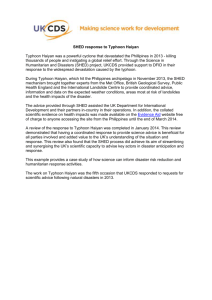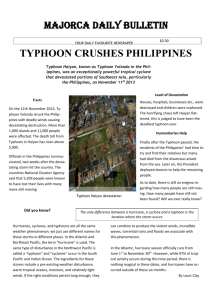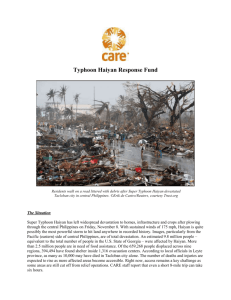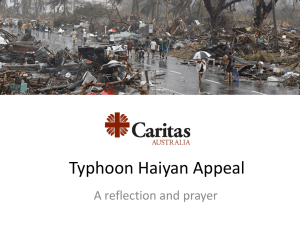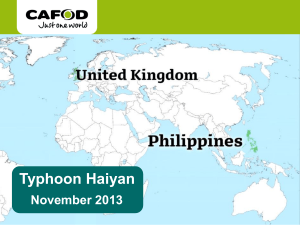The Emergency Cycle
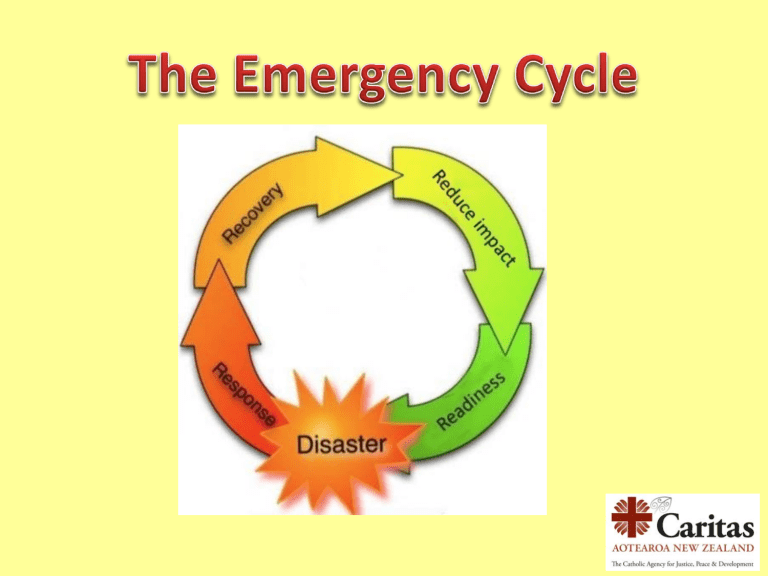
Public Storm Warning #4 issued by the
Government of the Philippines
• A very intense typhoon is heading to the
Visayas region.
• Very strong winds of more than 185 kph may be expected in at least 12 hours.
• Storm surge expected.
• People should move to safer shelters now!
People heard the typhoon warning on radios, TV and through SMS alerts
Some people said they didn’t receive any warning.
Some people said Typhoon Haiyan was a lot more powerful than they expected.
8 November, 2013
Super Typhoon Haiyan made landfall in six different locations in the Visayas region of the Philippines.
Haiyan was the strongest typhoon in recorded history to reach land, with wind speeds up to 348km/hr.
Interesting Fact
Filipinos have a different system for naming typhoons than other countries. Typhoon
Haiyan was called ‘ Typhoon Yolanda ’ in the
Philippines.
When a typhoon is expected to be very strong it is given a male name. Because Yolanda is a common female name in the Philippines, people didn’t think it would be as strong as it was.
Typhoon Haiyan did an enormous amount of damage particularly to the town of Tacloban.
Thousands of people died and half a million people lost their homes.
What happens after the typhoon?
There are four different phases following a disaster
The first phase after a disaster is called the
It includes cleaning up the mess.
It also involves assessing the damage
And providing emergency supplies
...like food and clean water
Sanitation kits for improving hygiene
Tarpaulins for providing shelter
And building kits containing a hammer and nails to repair homes
Houses are rebuilt using timber from fallen coconut trees.
People begin to grow their own food again with seedlings from Caritas
Some shops are re-opened
The next phase involves
Houses need metal straps to hold the walls to the foundations.
People grow their own food
Families need more secure access to water
Final phase
A new typhoon shelter
Improving water supplies through stronger pipelines
Storing food and water supplies
If another disaster occurs, the people of the Visayas region will be better prepared
Caritas helps at every phase…
Respond, Recover, Reduce impact, and Readiness for next time.
Human dignity – every person is valuable to
Creator God. Every person has mana and is worthy of respect.
Solidarity – we belong to one big human family – one whānau. We need to support each other no matter where we live in the world


